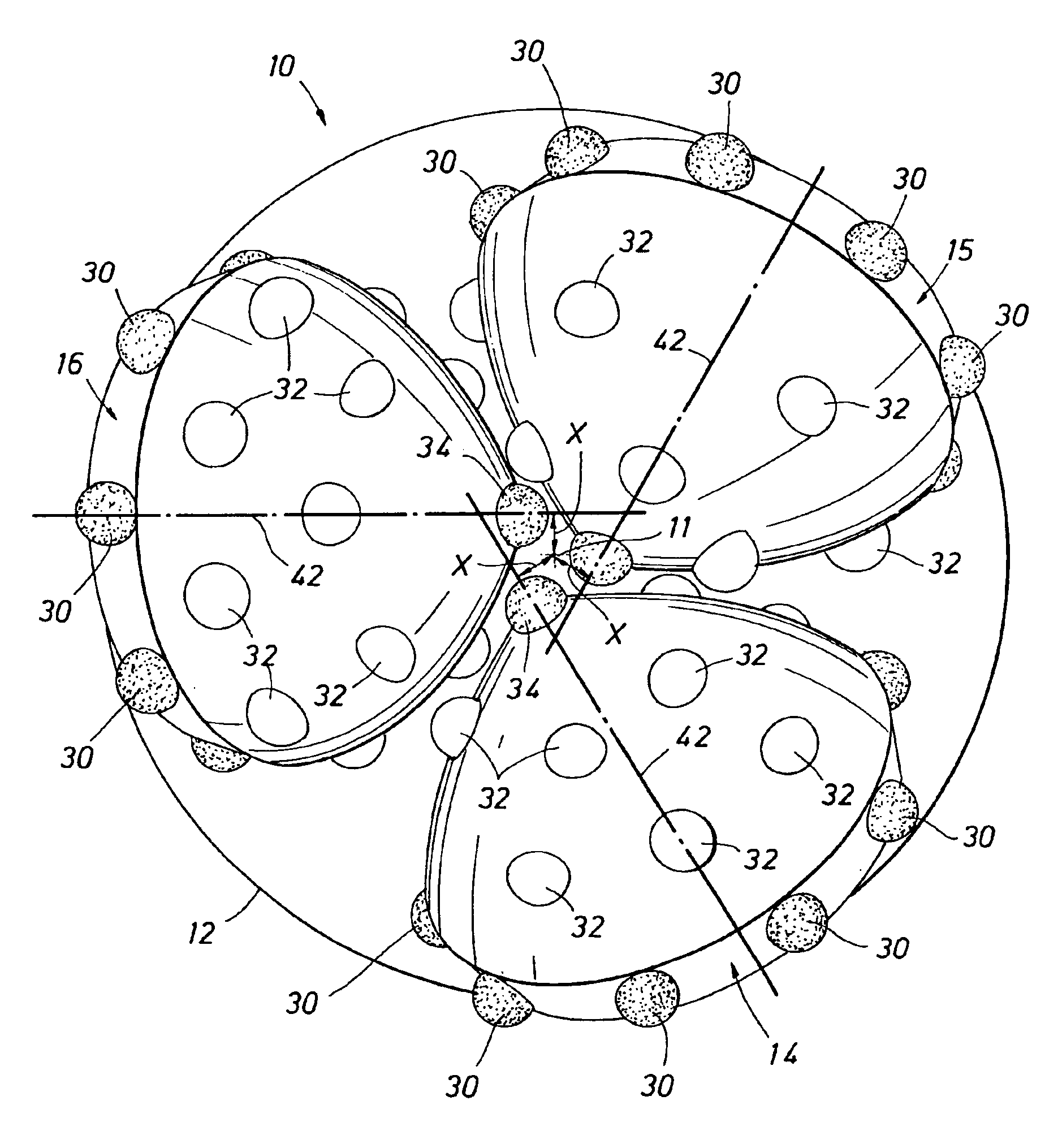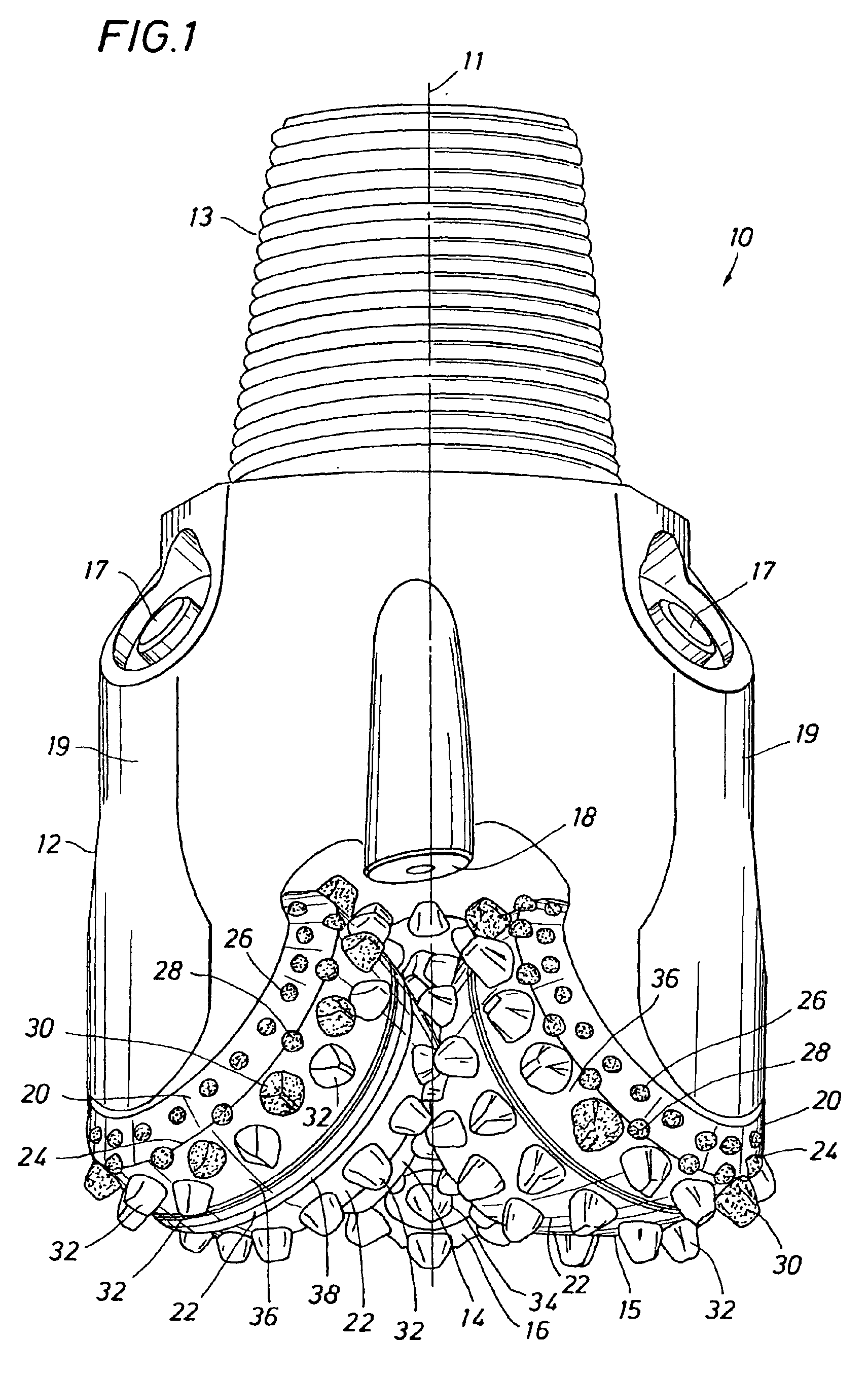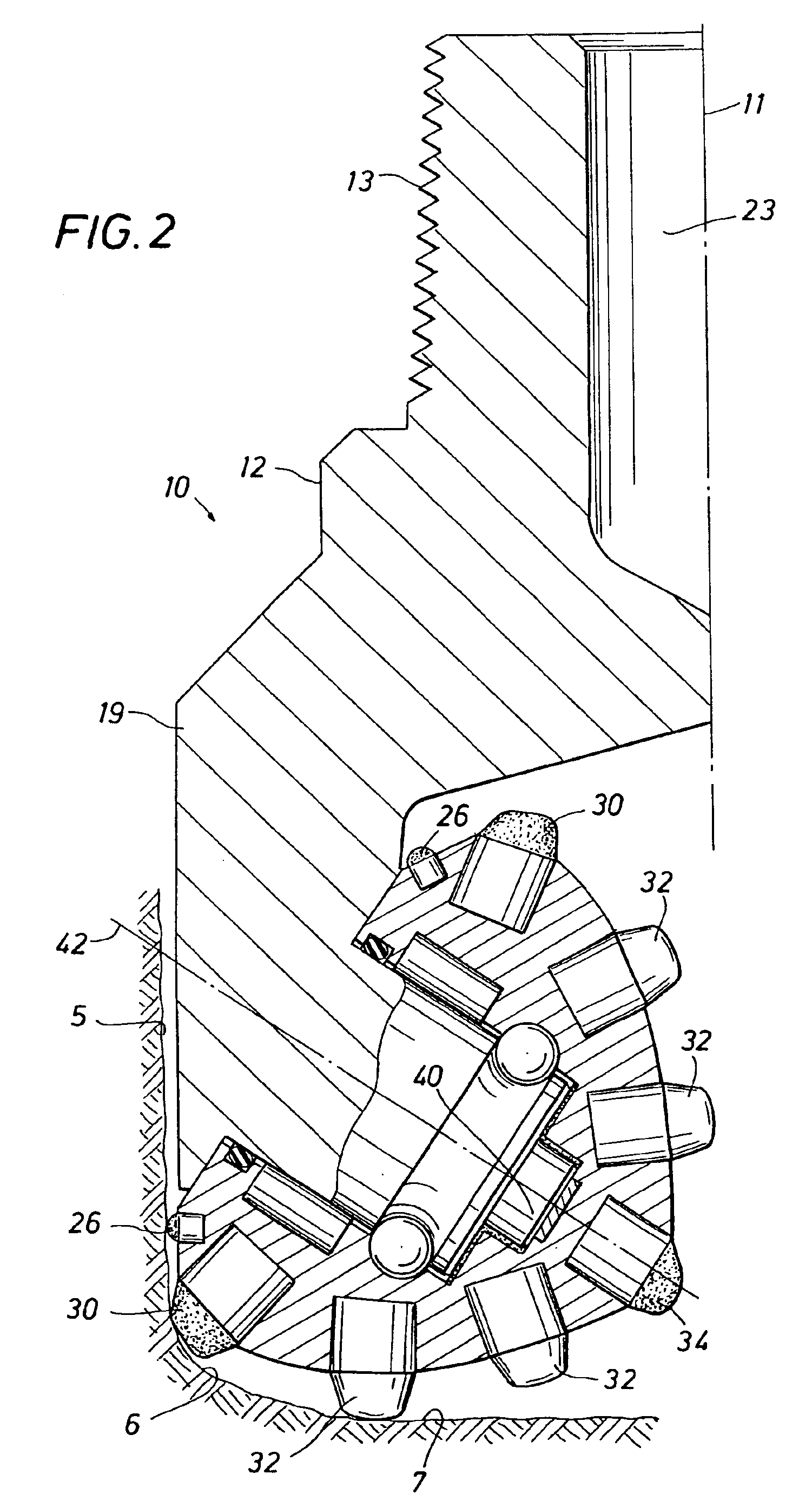High offset bits with super-abrasive cutters
a cutter and high offset technology, applied in drill bits, cutting machines, earthwork drilling and mining, etc., can solve the problems of requiring considerable time, effort and expense, and the process of drilling a borehole, and achieves the effect of reducing the risk of insert breakage and wear, and high offs
- Summary
- Abstract
- Description
- Claims
- Application Information
AI Technical Summary
Benefits of technology
Problems solved by technology
Method used
Image
Examples
Embodiment Construction
Because increased offsets result in greater insert breakage, as described above, one would think that a tougher, and therefore less hard, insert would be necessary to solve the insert breakage problem. The invention recognizes, however, that, the use of super-abrasive coatings on bit inserts, in combination with high offset, allows bits to drill acceptable footage at an increased ROP. The offset provides the ROP while the super-abrasive inserts provide the durability to achieve acceptable footage and maintain ROP.
FIGS. 1-3 depict an exemplary three cone roller, insert-type bit 10 constructed in accordance with the present invention. The bit 10 includes a central axis 11 and a bit body 12 having a threaded section 13 on its upper end for securing the bit to the drill string (not shown). Bit 10 has a predetermined gage diameter as defined by three rolling cone cutters 14, 15, 16 rotatably mounted on bearing shafts that depend from the bit body 12.
A single cone cutter, 14, is shown in ...
PUM
 Login to View More
Login to View More Abstract
Description
Claims
Application Information
 Login to View More
Login to View More - R&D
- Intellectual Property
- Life Sciences
- Materials
- Tech Scout
- Unparalleled Data Quality
- Higher Quality Content
- 60% Fewer Hallucinations
Browse by: Latest US Patents, China's latest patents, Technical Efficacy Thesaurus, Application Domain, Technology Topic, Popular Technical Reports.
© 2025 PatSnap. All rights reserved.Legal|Privacy policy|Modern Slavery Act Transparency Statement|Sitemap|About US| Contact US: help@patsnap.com



